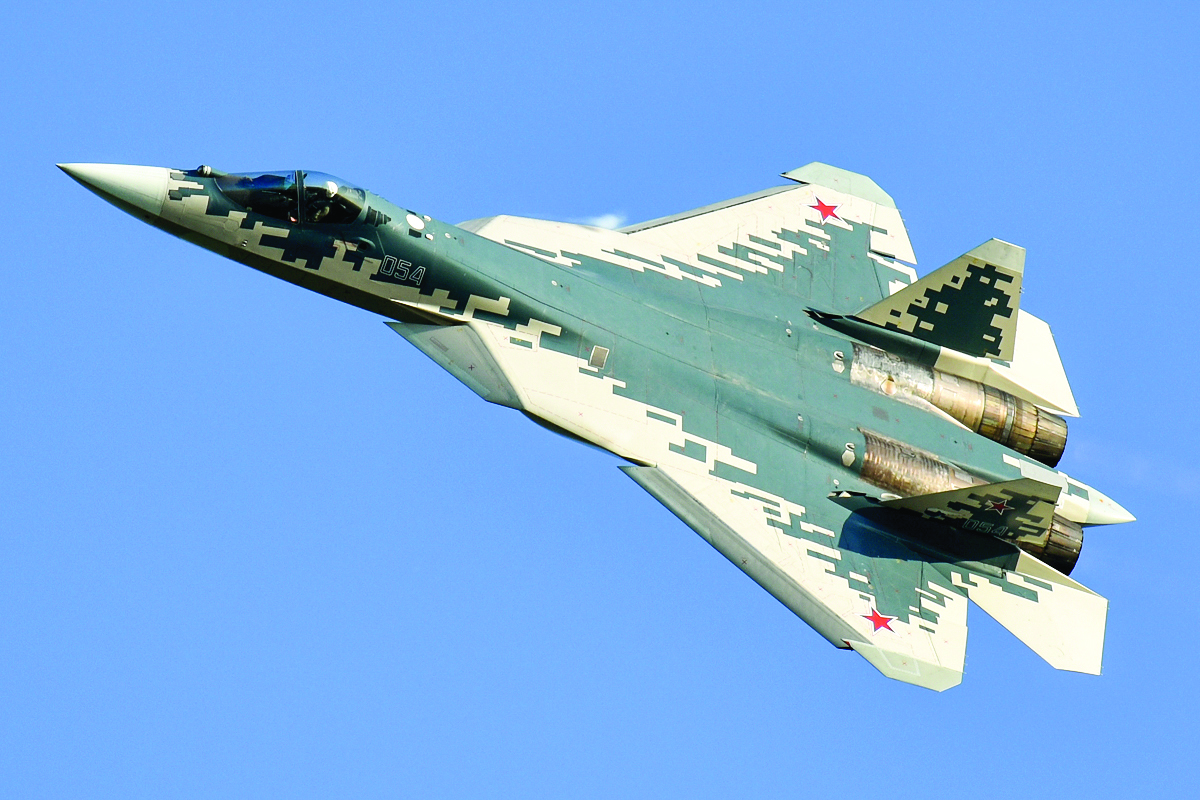On 26 December, China unveiled its sixth-generation stealth aircraft. In contrast, India remains focused on its fifth-generation fighter program, the Advanced Medium Combat Aircraft (AMCA), a critical initiative in its quest for defence self-reliance.
China unveiled its sixth-generation stealth aircraft, nicknamed the “White Elephant” and unofficially called the J-36, during a test flight that shook global aerospace and defence circles.
The tailless, delta-wing design signals Beijing’s push for advanced stealth, endurance, and long-range capabilities—a bold leap into the future of air power.
In contrast, India remains focused on its fifth-generation fighter program, the Advanced Medium Combat Aircraft (AMCA), a critical initiative in its quest for defence self-reliance.
The stark juxtaposition of China’s sixth-generation advances with India’s developmental challenges highlights urgent questions about the evolving balance of airpower in Asia and the imperative for India to accelerate its aerospace modernisation.
CHINA’S SIXTH-GENERATION LEAP
The J-36 exemplifies China’s aviation ambitions with its diamond-shaped design, radar-evading features, and capacity for integrating unmanned wingmen.
Like the US Next-Generation Air Dominance (NGAD) initiative, the platform emphasises a global shift toward networked systems in contested environments.
These developments align with Beijing’s broader strategy to consolidate air superiority over critical regions, including the South and East China Seas. By integrating autonomous drones and focusing on sensor fusion, the J-36 positions China to compete with Western airpower systems.
INDIA’S FIFTH-GENERATION QUEST
India’s AMCA, approved in 2024 with a budget of Rs 15,000 crores, aims for a prototype by 2026 and operational induction in the 2030s. While promising advanced stealth and supercruise features, the program faces hurdles in propulsion systems, stealth coatings, and production capabilities—highlighting the urgent need to address potential delays.
The unveiling of China’s J-36 emphasises this gap. Its advanced design, optimised for long-range missions and battlefield survivability, adds pressure on India to accelerate its modernisation efforts.
DOUBLE TROUBLE?
Pakistan’s planned acquisition of 40 J-35 stealth fighters further complicates India’s airpower dynamics, challenging its traditional air superiority. Combined with China’s sixth-generation developments, this dual-front challenge stresses the need for India to recalibrate its defence strategy.
China and Pakistan’s military collaboration also raises concerns about potential technology transfers that could further complicate India’s security calculus. This two-front airpower dynamic is no longer hypothetical; it is rapidly materialising, demanding a reassessment of India’s operational preparedness.
GLOBAL LESSONS IN AEROSPACE
MODERNISATION
5th-Generation Platforms and Projects: Russia’s Su-57 program is a prominent example of fifth-generation advancements featuring advanced avionics, supercruise capabilities, and stealth technologies.
The Su-57, already in service, incorporates features that lay the groundwork for Russia’s eventual move toward sixth-generation systems. Similarly, the Su-75 Checkmate aims to provide cost-effective stealth capabilities for export markets.
Turkey’s KAAN project, formerly known as TF-X, represents another significant effort in the fifth-generation domain. Designed to include stealth technology, high-speed manoeuvrability, and state-of-the-art avionics, KAAN demonstrates Turkey’s intent to emerge as a key player in the aerospace sector.
India’s AMCA program aligns with these developments, aiming to incorporate cutting-edge avionics, supercruise, and stealth features. However, achieving operational readiness will require overcoming technological and production challenges.
The scope for strategic partnerships with Russia, among other potential collaborators, could facilitate technology transfers and co-production opportunities, such as potential arrangements involving the Su-57.
6th-Generation Platforms and Projects: China’s J-36 represents a leap in integrating advanced technologies like manned-unmanned teaming (MUM-T), stealth optimisation, and networked systems. The United States NGAD initiative mirrors these advancements, focusing on AI-driven systems, autonomous drones, and sensor fusion. Together, these platforms redefine airpower by emphasising operational flexibility and battlefield dominance.
The F-35 Lightning II, while officially a fifth-generation fighter, continues to evolve through Block 4 upgrades, integrating sixth-generation capabilities such as advanced sensors, electronic warfare systems, and networking. This makes it a transitional platform bridging fifth- and sixth-generation features.
In Europe, the Future Combat Air System (FCAS) and Tempest projects highlight cutting-edge developments in sixth-generation fighters. Both programs emphasise loyal wingman drones, modular designs, and directed-energy weapons, reflecting a shift toward scalable, multi-role platforms.
Japan and South Korea are advancing their indigenous programs, the F-X and KF-21 Boramae. These fighters prioritise stealth, interoperability, and versatility, underscoring the global trend toward integrated systems.
By learning from these initiatives, India could enhance the AMCA with technologies such as MUM-T and autonomous loyal wingmen.
IS THERE A WAY FORWARD?
India’s response must balance ambition with pragmatism. Accelerating the AMCA’s timeline is critical, but interim solutions are equally essential.
Acquiring advanced 4.5-generation platforms like the Rafale F4 and upgrading indigenously manufactured Su-30MKIs could bridge gaps until AMCA’s induction. Adding layered capabilities such as Predator drones would further strengthen the air-superiority domain.
Strengthening domestic R&D is essential, particularly in autonomous systems and advanced propulsion. Collaborative efforts with strategic partners, including joint ventures and technology-sharing agreements, could enhance India’s aerospace ecosystem.
Additionally, adopting rapid prototyping and production methodologies similar to China’s could mitigate delays and maintain competitiveness.
WHAT ARE THE STAKES FOR INDIA?
The debut of China’s J-36 is a stark reminder of the speed at which global military aviation is advancing. For India, the challenge lies in ensuring the timely delivery of the AMCA while addressing immediate threats posed by evolving regional dynamics.
With airpower central to modern military strategy, delays carry significant risks. The need to accelerate and build capabilities has never been higher.
* Ashish Singh is a senior journalist with over 17 years of experience covering defence, aerospace, foreign affairs, and politics.

